Editorials
‘Exploited’ – A Queer and Erotic Giallo for the Digital Age

Being openly and undeniably queer in horror didn’t happen overnight. For so long, non-heterosexuality in the genre was coded or downplayed. Villainization was also common. Exploited, however, shows just how far we have come along in terms of transparency. While this 2022 film doesn’t have the renown or accolades of others, it does offer a change in routine. Neither queerness nor terror are sacrificed or dialed back in favor of the other, and the story is refreshingly uninhibited.
It would seem confusing to call Exploited openly queer when two of the central characters start out as closeted, albeit one of them is more intensely so than the other. Nevertheless, appearances are deceiving in Carl Moellenberg and Anthony Del Negro’s script. That sense of deception begins quickly — along with the film’s sensuality— as a webcam fetish model known as “wrestlerstud99” (Colin Bates) is attacked and presumably murdered by a masked intruder in his own dorm room. All while an unidentified patron watches through the victim’s camera. The outcome is unclear in real time, but director Jon Abrahams (Scary Movie, House of Wax) delivers an attention-grabbing preview of the film’s persuasive blend of sex, eroticism, and horror.
Diegetic found footage comes into immediate play as the present-day story kicks off. Later on after the wrestlerstud99 incident, freshman Brian (Jordan Ver Hoeve) discovers a foreboding and mysterious flash drive in his dorm room at the same university. On it is an array of wrestlerstud99’s webcam sessions, including his final one. Whether or not these videos were personally recorded by the performer himself or someone else is unclear at that time. All the same, Brian obsesses over the whereabouts of the cammer; the discernible innocence of the protagonist is eroded as he falls deeper into this dark rabbit hole as well as the fantasy of wrestlerstud99. While not quite on the exact same wavelength or done to the same effect, this aspect of Exploited feels akin to other films where the viewer — anyone ranging from spectator to editor to censor — is affected on a deep and psychological level by the lurid footage they expose themselves to over and over again.
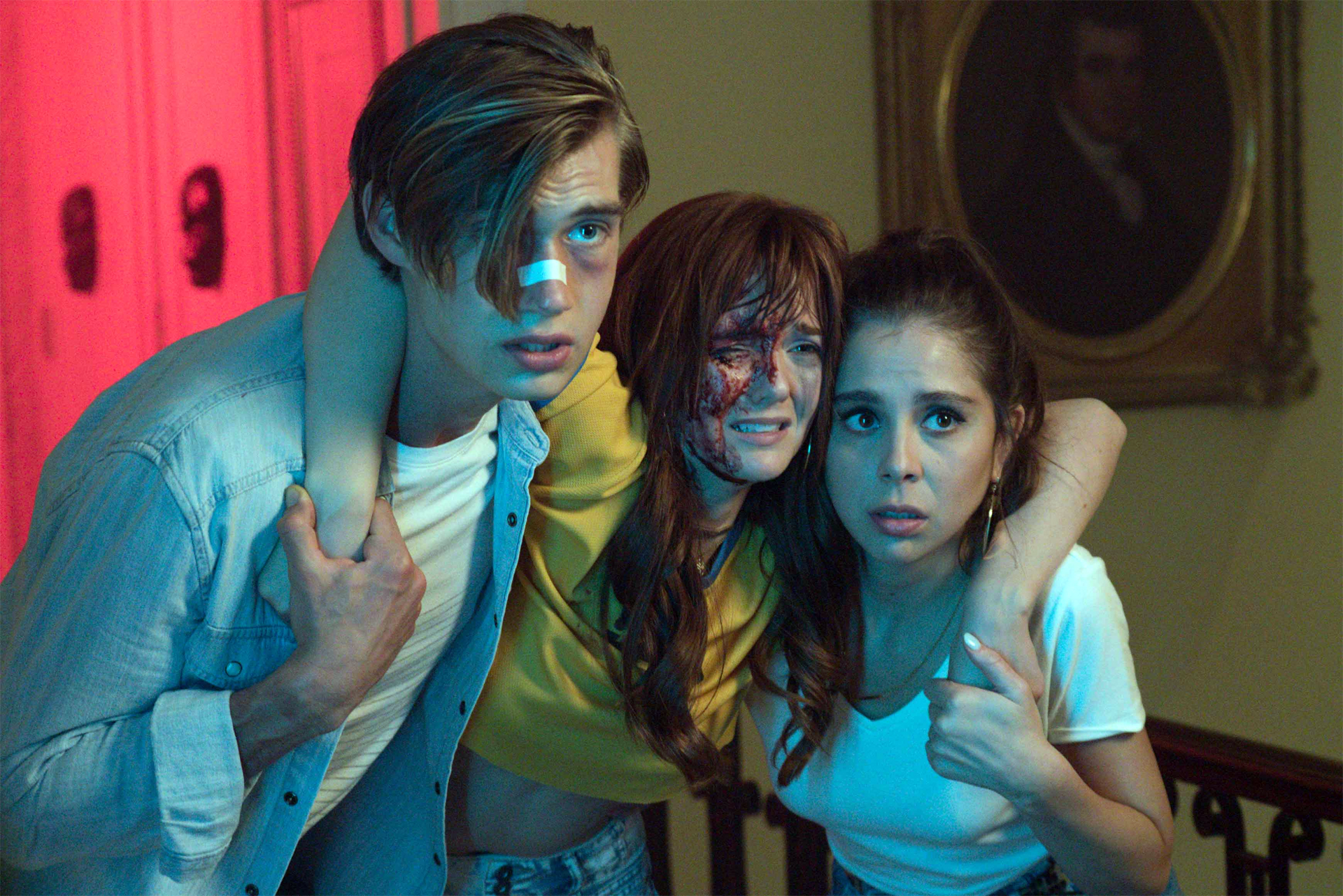
Image: Jordan Ver Hoeve, Hannah Rose May and Makenzie Vega in Exploited.
Coming out can pose a risk in any given genre, but horror naturally presents singular obstacles for the vulnerable party. The passé “closet monster” trope of past queer cinema — the menace of exposure sends a closeted character into a whirlwind of paranoia, anger, and fear — is embodied in Brian’s new roommate and, much to his own surprise, bedmate. A drunken night out as well as Brian’s heady obsession with wrestlerstud99 led to the unplanned hookup. In the wake of that one-night stand, Brian is more confused and hurt than fearful of being outed, whereas Jeremy (Andrew Matthew Welch) feels vulnerable for reasons both stated and implied. That dread then manifests as a leather-clad, gimp-masked villain who harasses and stalks Jeremy online before escalating to physical violence. Their recurring text threat of “why are you ignoring me?” has a loaded meaning here. As it turns out though, Jeremy’s visceral reaction to his potential exposure is not simply just another case of self-loathing or monsterizing. He has rather valid, not to mention sad motivation for his erratic and severe behavior.
Usually the kneejerk reaction to seeing a masked antagonist in any horror film is “slasher,” but Exploited acts far more like a giallo. The story is nonlinear and convoluted, the visual style dips in and out of garishness and surrealism, and the protagonist is embroiled in a sexual and psychological mystery. On top of that is a general sinuousness to most everything and everyone; as said before, nothing is as it seems. Several reviews have then described this film as Rear Window for the digital age, seeing as the main character here is also succumbing to the mental aftermath of witnessing what he thinks is a murder. In place of James Stewart peeping on a neighbor through a long-lens camera is a closeted college kid who peeks into the private acts of a fetish model and his clientele. The certain ingredient of social isolation fuels both characters’ head trips, although in Brian’s case, his withdrawal doesn’t stem from a physical injury. Another difference is Brian’s instinct, while misled and affected by multiple forces, isn’t totally incorrect. There is, in fact, something amiss about wrestlerstud99.
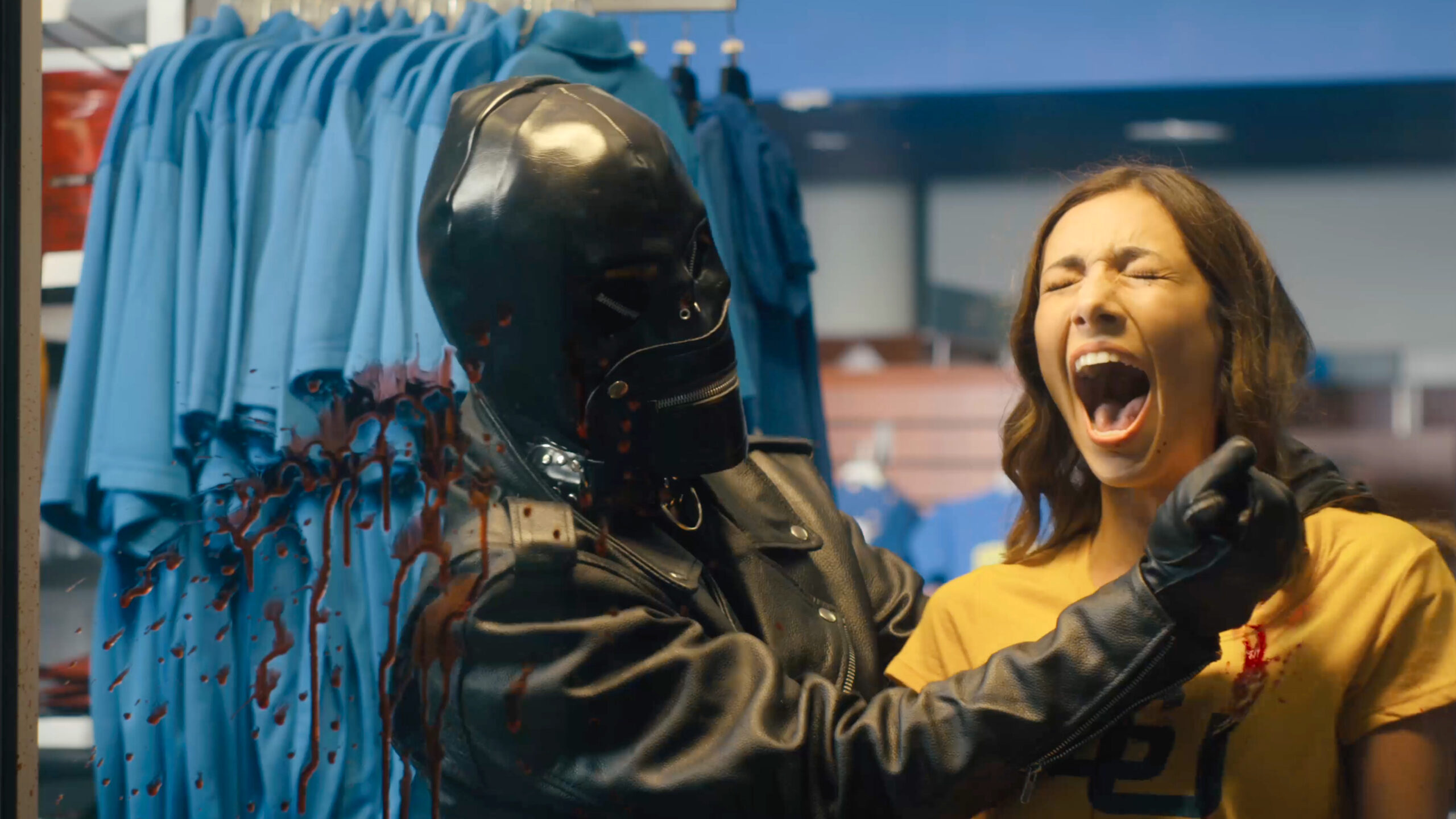
Image: Jeremy sees the killer wherever he goes in Exploited.
In some cases, other queer horror films can be overly precious with their material, especially if the story is personal. However, Exploited is never afraid to get messy and rough itself up. The film shows no regret as it goes to wild and unexpected places. Of course, not every turn is as rewarding or well handled as the next; Exploited often takes on more than it can handle or has time for. Even so, the director and writers don’t seem too hung up on delivering a correct and tasteful portrayal of queerness. That’s not to say this is a negative depiction, either. Subtract the high duress of their weird situation, and the two main queer characters feel like real people here, more or less. That detail plus a relatively happy ending — one replete with acceptance and love — and surprising moments of sex positivity tend to be overlooked in appraisals.
This twisty film mixes digital voyeurism and softcore thrills with specific ingredients of gialli, thus creating a sticky genre concoction that won’t go down easily. By no means is Exploited for everyone, but the end result is darkly fun and, above all, blatantly queer.
Horror contemplates in great detail how young people handle inordinate situations and all of life’s unexpected challenges. While the genre forces characters of every age to face their fears, it is especially interested in how youths might fare in life-or-death scenarios.
The column Young Blood is dedicated to horror stories for and about teenagers, as well as other young folks on the brink of terror.

Image: Poster for Exploited.

Editorials
‘The Strangers: Chapter 1’ – Six Things We Learned from the Blu-ray Commentary

Lionsgate’s The Strangers: Chapter 1 launches a reboot trilogy based on the 2008 home invasion film, all three movies shot simultaneously under the direction of Renny Harlin.
To tide you over until Chapter 2, Chapter 1‘s home video release offers an audio commentary from star Madelaine Petsch and producer Courtney Solomon that hints at what’s to come.
Here are six things I learned from The Strangers: Chapter 1 commentary.
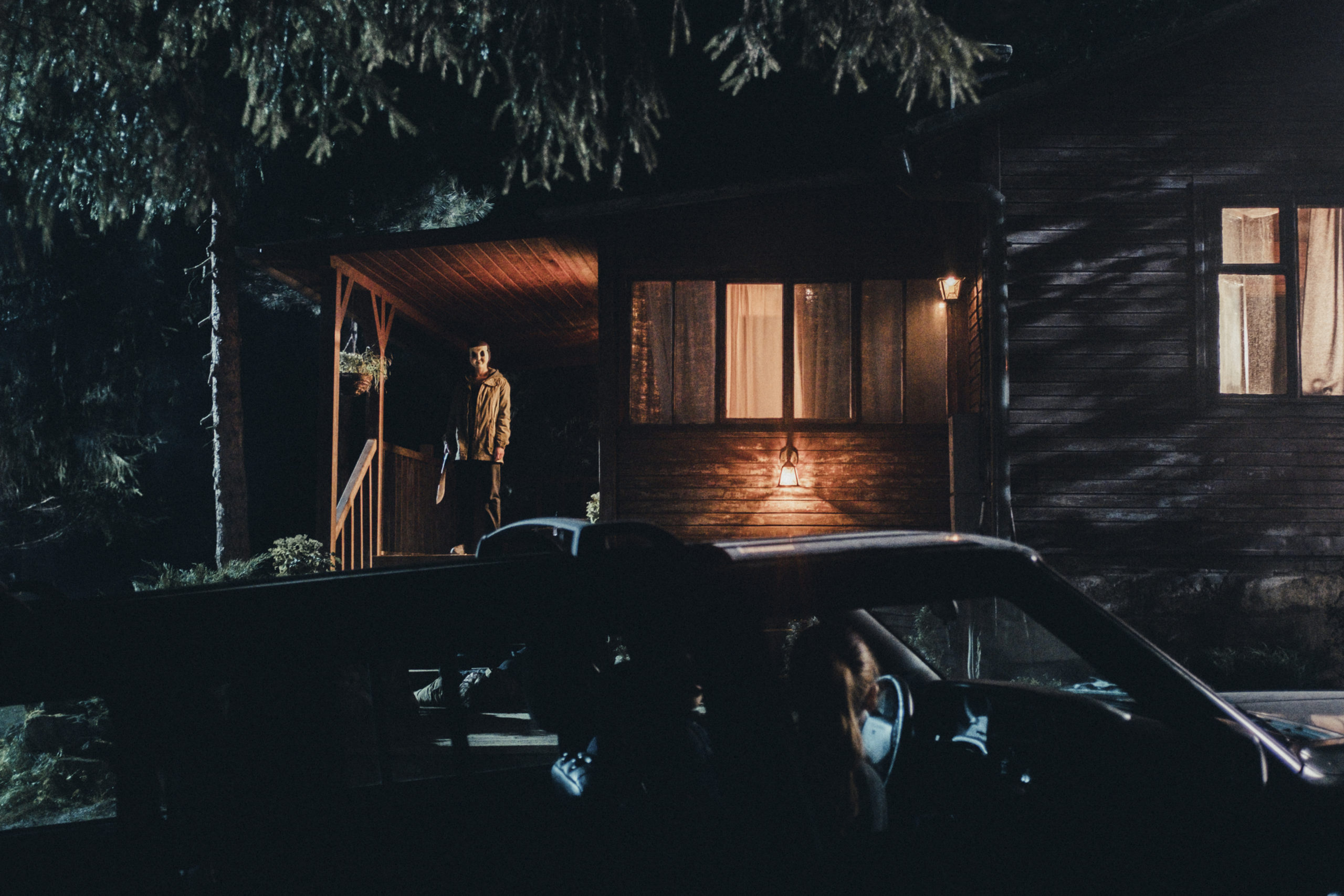
1. The opening music cue was inspired by The Shining.
The film’s opening establishing shot roving over the woods — with Bratislava, Slovakia standing in for the small town of Venus, Oregon — evokes the beginning of Stanley Kubrick’s The Shining, which was also a point of reference for the score.
“When we were scoring this, we looked at The Shining,” says Courtney Solomon, referring to Wendy Carlos’ iconic main title theme. “‘Cause we were looking for how, even though it’s dated, they were in that open, sort of everything environment, musically.”
Justin Caine Burnett (I’ll Always Know What You Did Last Summer, 9-1-1: Lone Star) composed the score.
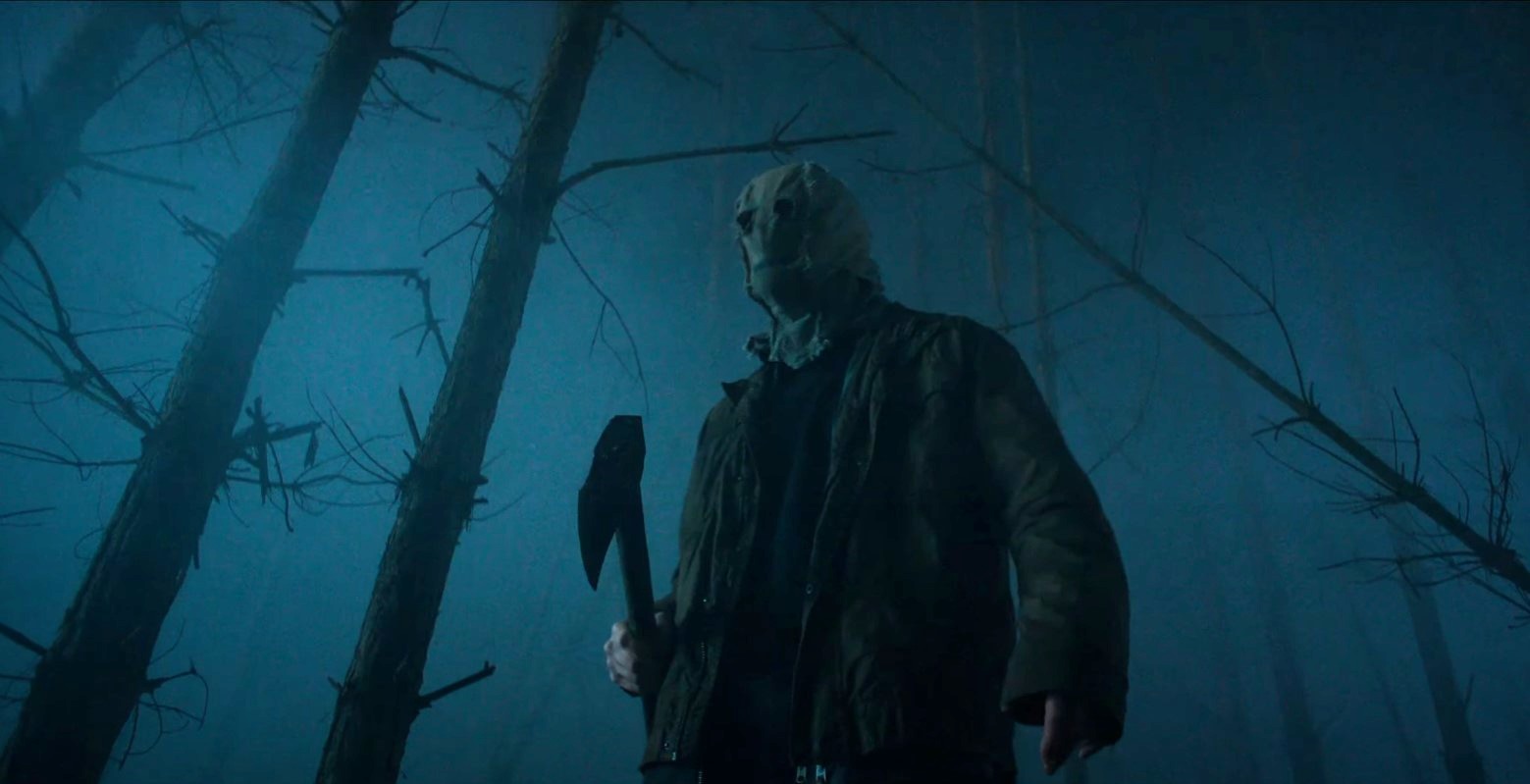
2. The cold open features an important character to the trilogy.
Shot together like one long movie, The Strangers trilogy will take place over a four-day period, with each subsequent entry picking up immediately after its predecessor’s finale.
Chapter 1‘s cold open features actor Ryan Bown — doing his own stunts, as Petsch points out — as a character who will play a bigger role in the coming installments.
“Jeff Morell, we’ll come to find out who this guy is as we go through all three chapters, but we sort of begin here,” Solomon notes.
“He’s a pretty important piece to this puzzle,” teases Petsch. “Some might say the piece.”
They also hint that viewers haven’t seen the last of Rachel Shenton’s Debbie, who Petsch’s Maya talks to on FaceTime, along with many of the townspeople from the diner scene.

3. Petsch was terrified of the project due to her love of the original film.
The shadow of the original Strangers looms large over Chapter 1. Petsch is “such a fan” that she was hesitant about doing a new version:
“I was terrified to touch that property. I think it’s an incredibly perfect horror film. I’ve seen so many horror films, and I feel like it’s one of the only ones that’s truly scared me to my bones, that I still think about all the time. So as we were trying to expound upon that story, with the second and third movies, we had to naturally repel the first story.”
Solomon similarly thinks highly of the original:
“I love the original Strangers. I wasn’t as big a fan of the sequel [2018’s The Strangers: Prey at Night], because it was just another story in a trailer park with the Strangers. I didn’t love that two of the Strangers got killed. That was just me personally; there are people that liked it. I was like, ‘I’d like to do something more interesting.’ In order to do it, to find that balance of retelling what made the first one so great as the basis to be able to launch off and tell the rest of the story.”
Petsch adds, “As we know, at the end of the first one, one of the last shots is Liv [Tyler]’s eyes opening. I’ve always wondered what happens after that.”
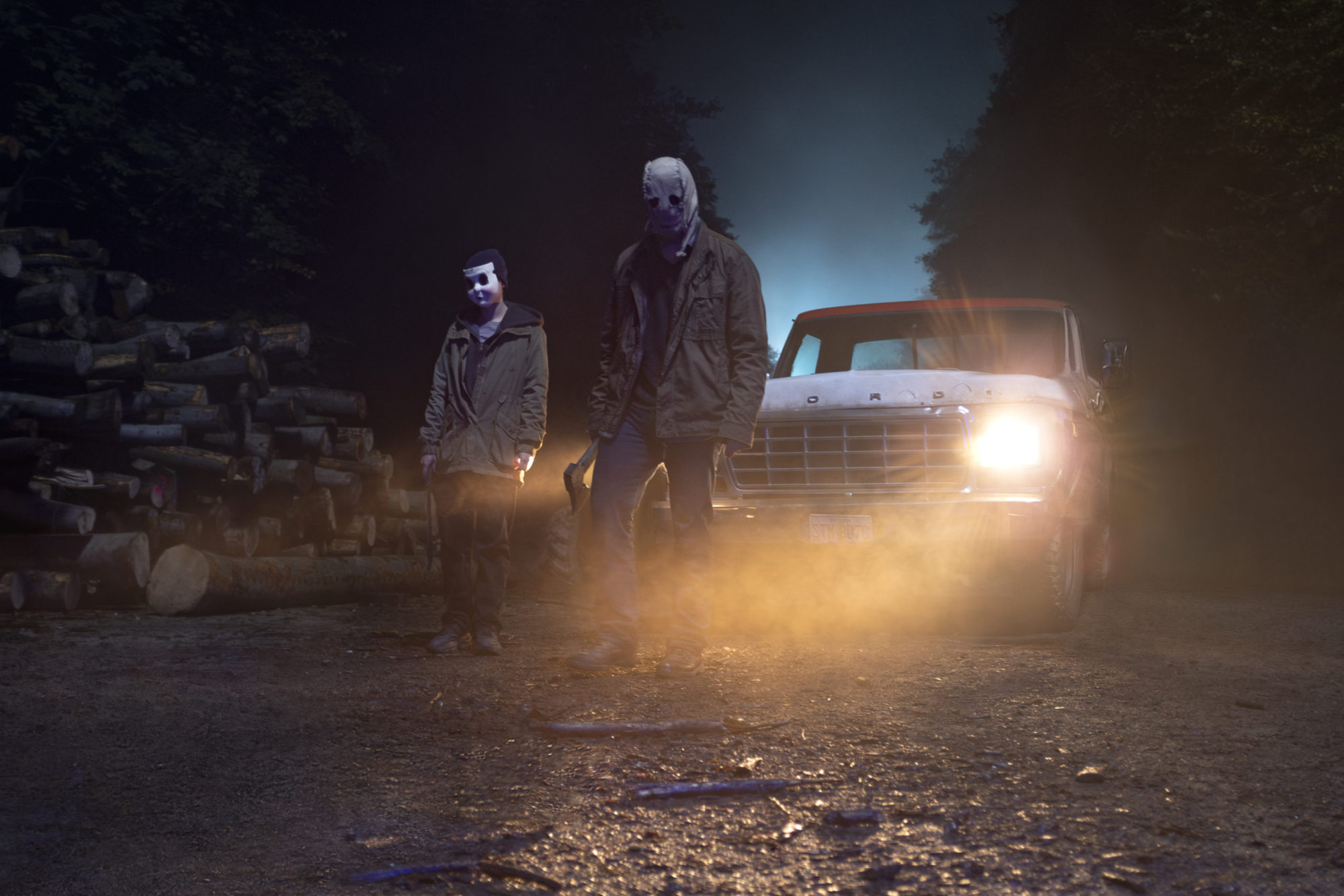
4. The killers’ hair is concealed to hide their identity.
Although the filmmakers opted to keep the look of the titular Strangers true to the original, Dollface and Pin-Up Girl’s hair is now concealed. This was a “purposeful change” to hide their identities, which will presumably be revealed later in the trilogy.
“We had a specific reason for doing it, obviously, because you do end up meeting a bunch of the folk from this small town,” explains Solomon. “You don’t know who’s wearing the mask, so if we had given up the hair that would make that identification a little bit easier.”

5. Petsch conceived the shower scene based on a personal fear.
In addition to starring in all three films, Petsch is an exclusive producer on the trilogy. More than a mere vanity credit, she had creative input throughout the stages of production, including the addition of Chapter 1‘s shower scene.
“This was not in the original script, the shower. Maybe our first week we were talking about what would be the scariest thing for me if I was in a situation like this,” she recalls. “I shared with you that every time I take a shower and I’m at the point where there’s suds of soap in my eyes and I’m shampooing, I’m always sure that’s when the serial killer’s gonna walk in. So we wrote this in, because I think that must be a common experience.”
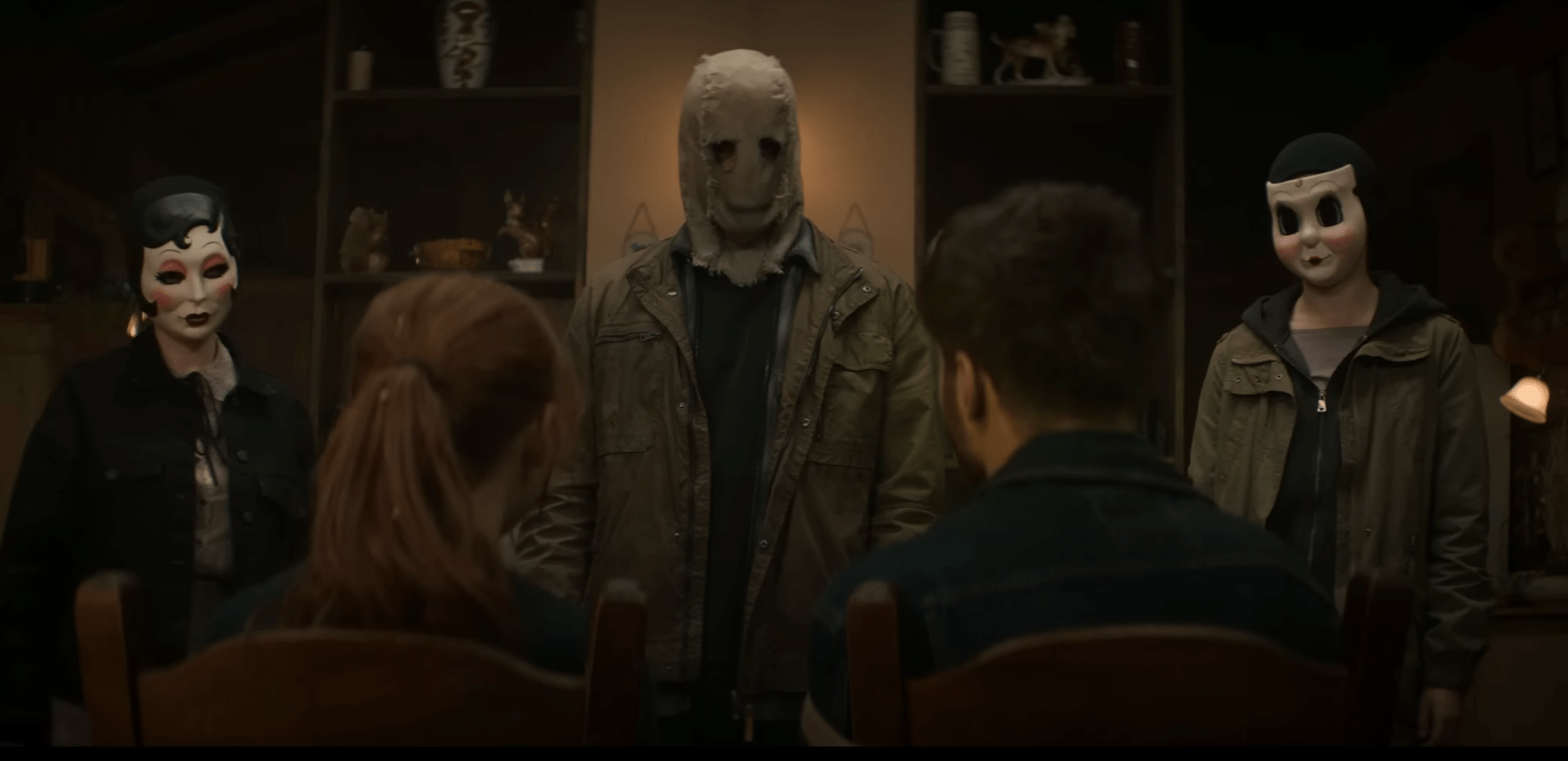
6. Remaking the original film was a conscious decision to kick off the trilogy.
It’s not until the end titles that the pair directly address the thought process behind launching the reboot trilogy with a retread of the original.
“Some people may go and watch this and go, ‘Oh, my god. It was a remake of the original.’ But actually this is just act one of our giant movie! If you watched it as a whole, then you’d be like, ‘Oh, shit. That’s just where it started,” says Solomon. “This is the 90-minute setup of the entire thing.”
Petsch concurs, “Don’t get me wrong. I also feel like the original is so good that it would be crazy to just do a remake of the original, but in order to tell the story that we were trying to tell, you kind of have to go back and do a repurposing of that story with these two new characters.”
“They did the whole first movie, the original, amazing, but that’s the jumping off point. This entire giant movie that’s become three chapters was done with a lot of love,” Solomon concludes.
The Strangers: Chapter 1 is available now on 4K Ultra HD, Blu-ray, DVD, and Digital.
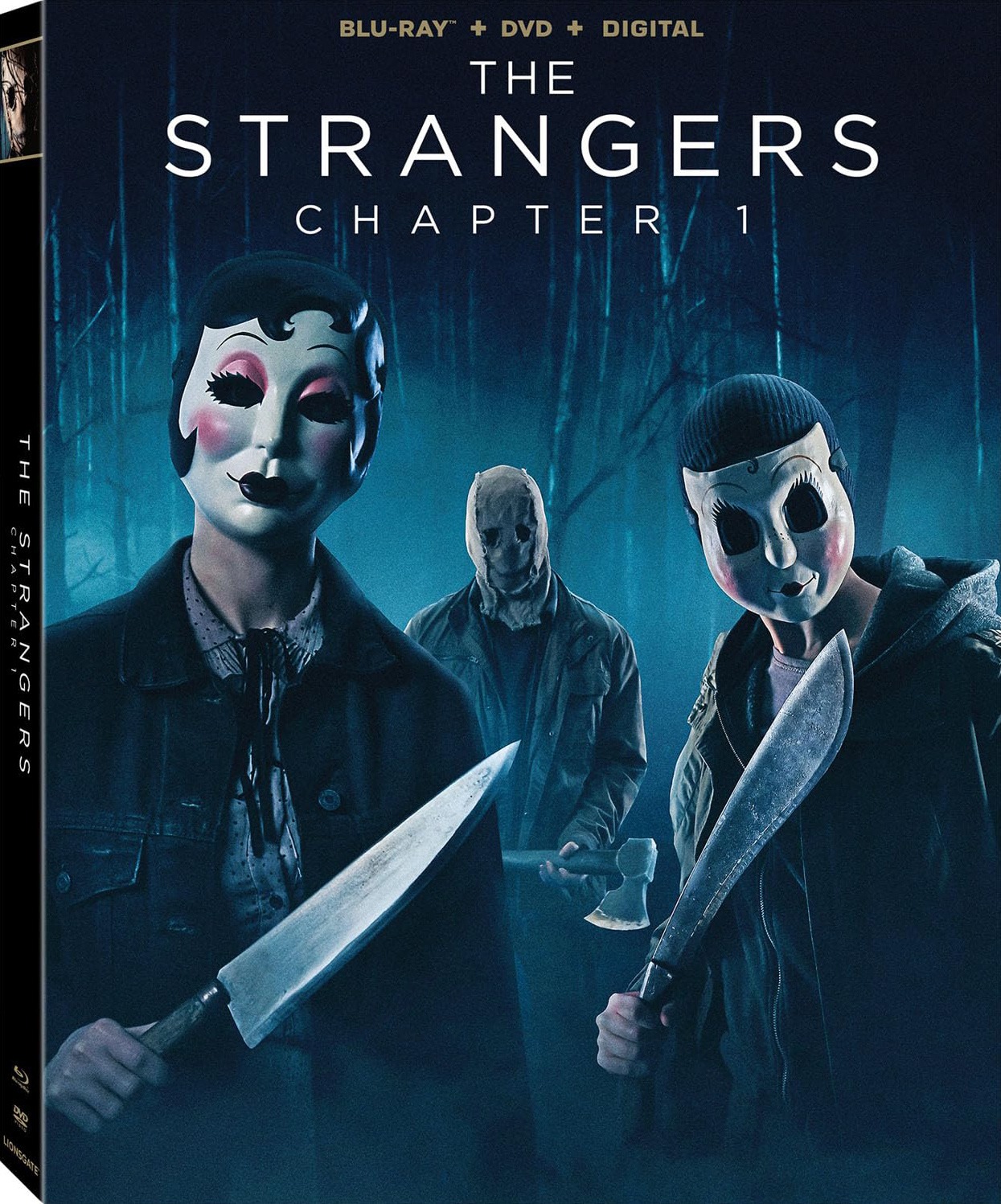
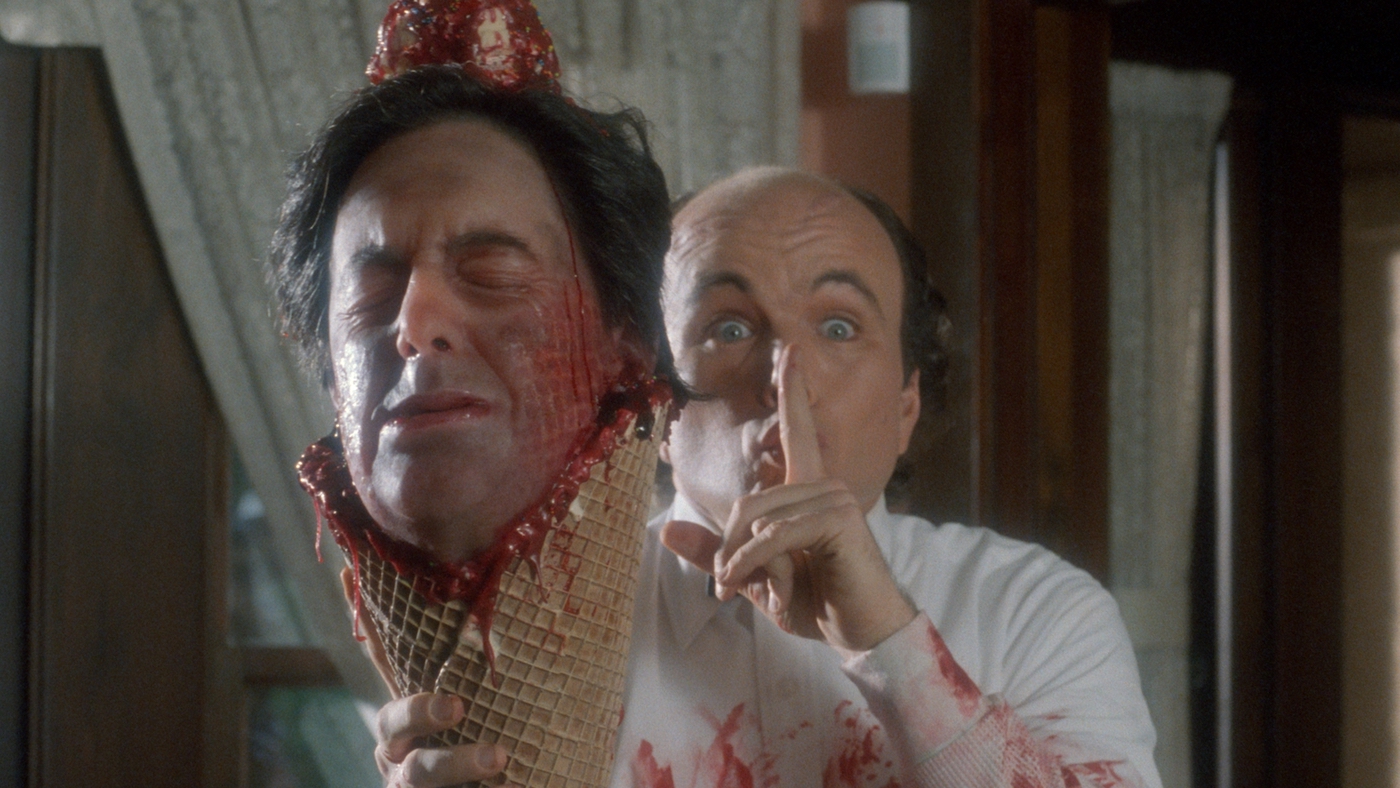
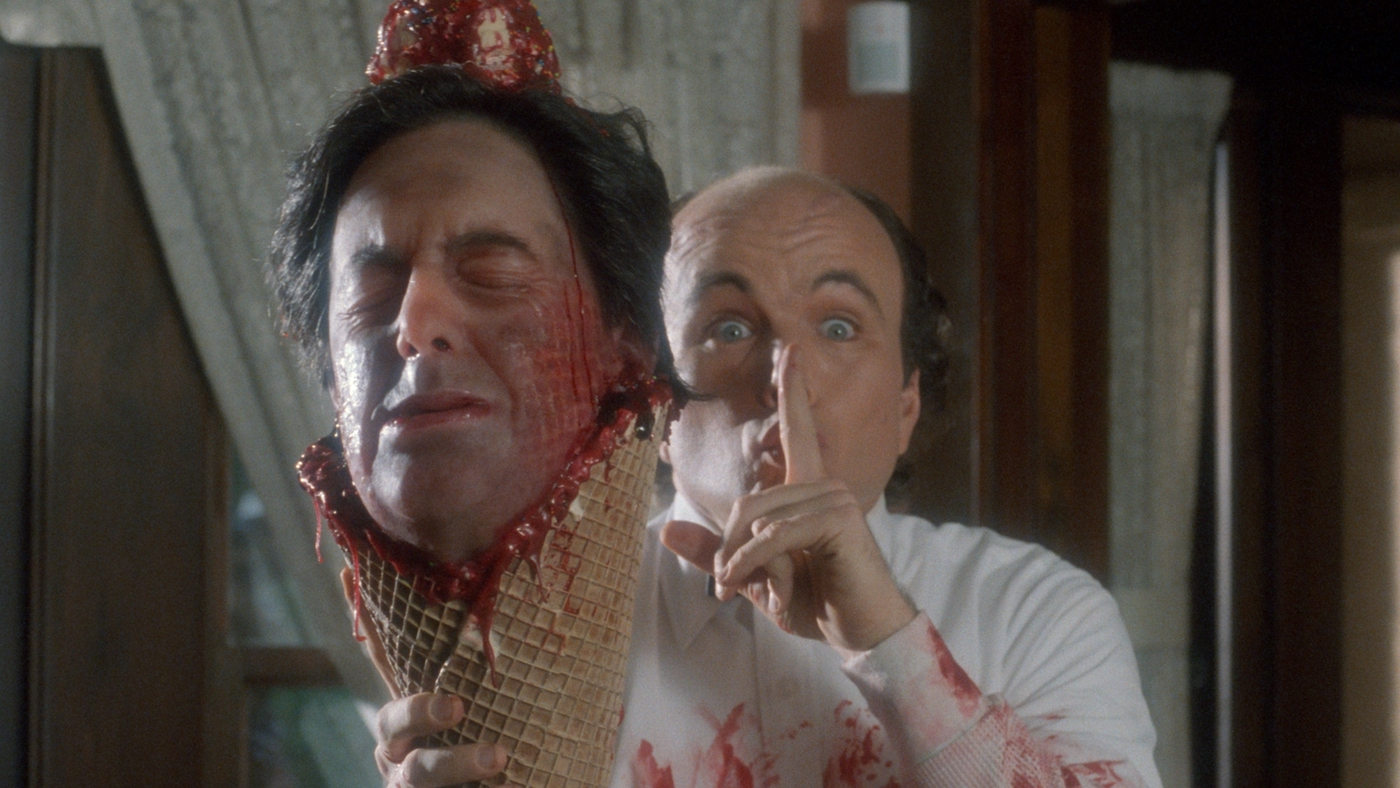
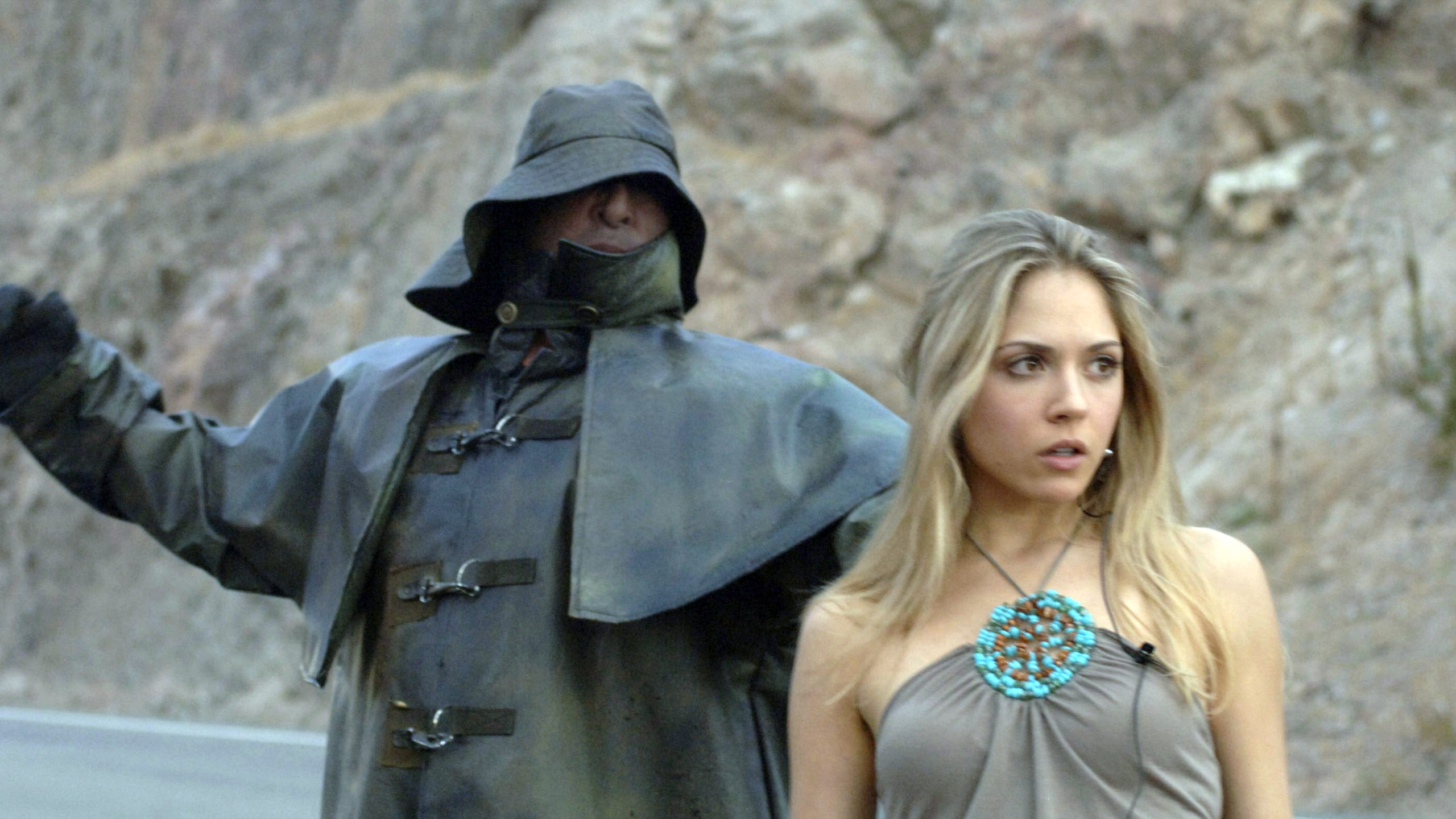
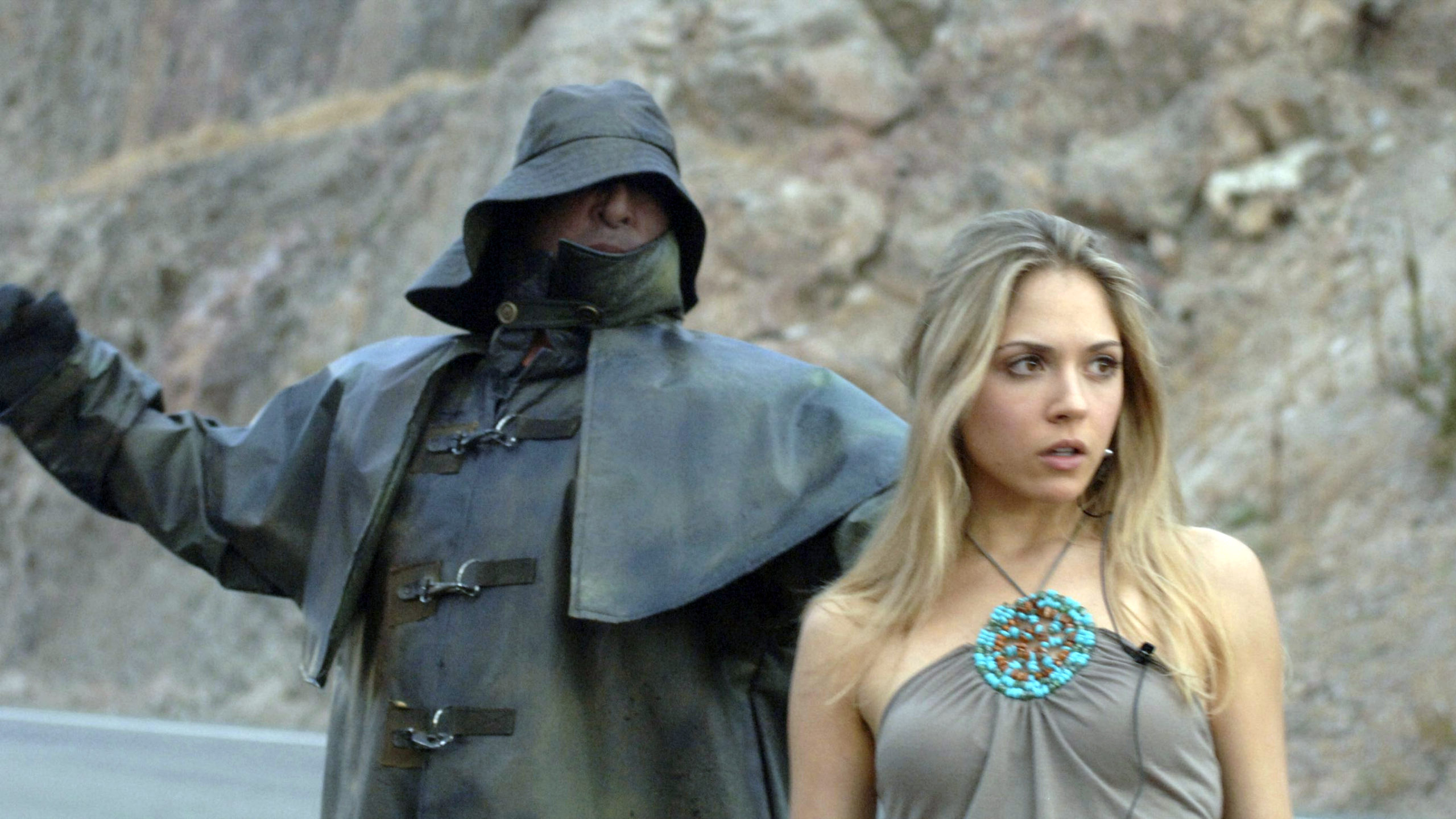








You must be logged in to post a comment.